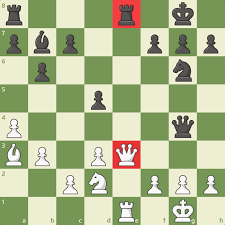Chess is a game of strategy, and like any battle, it’s important to start off on the right foot. The opening phase of a chess game sets the stage for everything that follows. While there are endless possibilities in the middle and endgame, the opening is where you lay the groundwork for success. Whether you’re new to the game or looking to strengthen your chess skills, understanding chess openings is crucial.
In this blog, we’ll explore what chess openings are, why they’re important, and some of the most popular opening strategies that can help you build a solid foundation for your game.
What Are Chess Openings?
The opening is the first phase of a chess game, typically encompassing the first 10-15 moves. The primary goals of the opening are:
- Control the center: The center squares (d4, d5, e4, and e5) are the most important because they provide more mobility for your pieces.
- Develop your pieces: Move your knights, bishops, and pawns to effective squares so they’re ready for action.
- Ensure king safety: Protect your king early by castling, a move that also helps connect your rooks.
A good opening sets you up for a smooth transition into the middle game, where you can focus on strategy and tactics. Without a solid opening, you may find yourself in a disadvantaged position early on, making it harder to recover.
Why Are Chess Openings Important?

Understanding and mastering chess openings offer several advantages:
- Time efficiency: Good openings help you develop your pieces quickly, giving you more time to think through the mid-game.
- Increased control: Controlling the center from the start puts pressure on your opponent and limits their options.
- Tactical opportunities: Some openings are designed to create tactical threats right from the beginning, giving you the upper hand.
- Psychological advantage: If you know your openings well, you can put pressure on your opponent by playing moves they may not be prepared for.
Popular Chess Openings
Let’s take a look at some of the most popular chess openings, each with its unique strengths.
1. The Ruy Lopez (Spanish Opening)
The Ruy Lopez is one of the oldest and most respected chess openings, named after a Spanish priest who wrote about it in the 16th century. It starts with:
- e4 e5
- Nf3 Nc6
- Bb5 The idea behind this opening is to put pressure on the black knight at c6, which supports the e5 pawn. White aims to dominate the center and prepare for long-term positional play.
2. The Sicilian Defense
The Sicilian Defense is a very aggressive and popular response to 1. e4. Black immediately challenges White’s central pawn with:
- e4 c5 The idea is to break the symmetry and seize control of the d4 square. The Sicilian Defense leads to asymmetric positions and is highly tactical, making it a favorite of players who enjoy sharp, complex positions.
3. The Queen’s Gambit
The Queen’s Gambit is a classic opening that’s been gaining popularity, especially since the Netflix series “The Queen’s Gambit.” It starts with:
- d4 d5
- c4 White offers a pawn on the c4 square in exchange for control of the center. If Black accepts the gambit with dxc4, White gains space and can launch an attack. This opening is solid, strategic, and leads to a rich variety of positions.
4. The English Opening
The English Opening is a flexible opening that starts with:
- c4 This move aims to control the d5 square indirectly and prepares for the development of the knight to c3. The English Opening is often used by players who prefer a slower, more positional game. It can transpose into other openings, making it an adaptable choice.
5. The King’s Indian Defense
The King’s Indian Defense is a popular opening for Black, especially in high-level play. It begins with:
- d4 Nf6
- c4 g6 Black fianchettos the dark-squared bishop and aims to control the center with pawns later in the game. This opening leads to dynamic positions where both sides have plenty of attacking chances. It’s highly favored by players who enjoy counterattacking play.
Tips for Learning Chess Openings
- Know a few openings well: While it’s tempting to learn many different openings, it’s better to master a few solid openings that suit your play style. Whether you like aggressive play or strategic maneuvering, find openings that match your strengths.
- Understand the principles behind the moves: Don’t just memorize moves; understand the ideas behind them. Knowing why you’re playing a move is more important than remembering the exact sequence.
- Practice regularly: Openings are best learned through practice. Play against opponents of different strengths to see how they respond to your opening choices. Over time, you’ll develop a deeper understanding of various openings and their resulting positions.
- Analyze your games: After each game, take the time to analyze your opening moves. Did you develop your pieces efficiently? Did you control the center? Reflecting on your openings will help you improve and spot areas for growth.
Conclusion
Chess openings are essential to your overall strategy and can make or break your game. By studying common openings and understanding the principles behind them, you’ll be able to play more confidently from the start. Remember that chess is a game of patience and practice, and with time, you’ll be able to choose the best opening for any situation. Whether you prefer tactical complexity or positional mastery, there’s an opening out there for you to master.
Happy playing, and may your opening moves lead you to victory!



